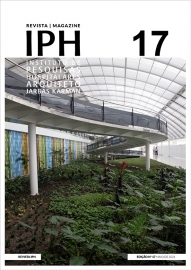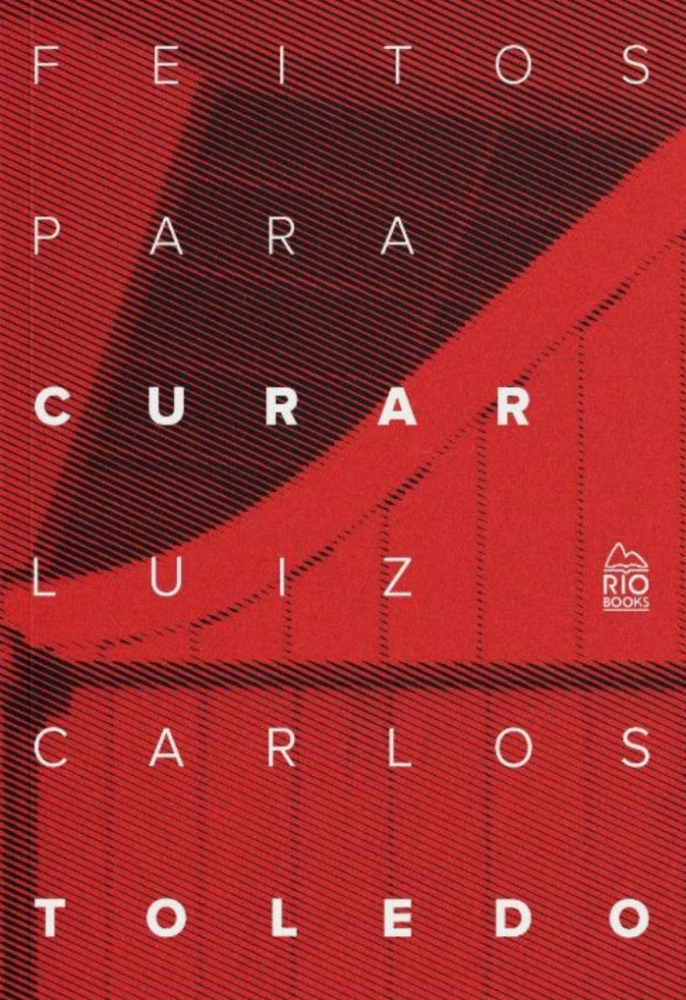Publications IPH Magazine Revista IPH Nº17 Hospital architecture and its propositions for beginners and experts

- IPH Magazine #17
- COVID-19 pandemic and the trends in healthcare design: insights from the "Decalogue for Resilient Hospitals"
- Healthcare closer to people: A qualitative study of a Swedish reform on healthcare delivery
- Spatial flexibility and extensibility in hospitals designed by João Filgueiras Lima
- Design Insights from a Research Initiative on Ambulatory Surgery Operating Rooms in the U.S.
- A study on the development of the concept growth and change on hospital architecture in Japan
- A study on hospital infection control through architecture in 1980: Chapecó Regional Hospital case study
- Natural ventilation for hospitalization environments: historical aspects
- Hospital architecture and its propositions for beginners and experts
Hospital architecture and its propositions for beginners and experts
Elza Costeira, Brazil

Rio Books publishing house, teamed up with IPH and based on the great interest in hospital architecture, is pleased to announce the release of a new and revisited edition of Made for Healing - Architecture and Design Process in Brazil, by Luiz Carlos Toledo.
The book results from the architect and urban planner's master's thesis and was published in 2006 in partnership with ABDEH. Even though it was sold out, it was still in great demand by students and architecture professionals eager to structure their projects and studies on a solid knowledge base about healthcare environments in Brazil.
This long-awaited second edition of Made for Healing came to fulfil this demand, besides including some hospital parameter updates, as Toledo himself explains in his opening, a much-needed update since more than fourteen years have passed since its first publication. The book updates, for instance, 70 m²-paramete per bed, a data often used to base the calculation for the total area of a hospital, to 100 to 150 m² per bed, thus reflecting the new reality of the sector. The author also discusses the increase in modular measures used in drawings and the expectation of further design innovations most likely to emerge after the COVID-19 pandemic.
Professor Antonio Pedro de Carvalho, ABDEH Publishing General Editor, wrote the Presentation for this second edition highlighting the timeliness and importance of the book and its unique lessons for health architecture. The book also brings a Foreword by Fábio Bitencourt, ABDEH former president (from 2011 to 2014), who points out the importance of the reflections presented, since the historical evolution of hospitals, passing through design compatibility regarding medicine and architecture and highlighting the participation of Brazilian architects who have left a legacy on the subject in their works.
The book is organized into seven chapters, in addition to the References and Appendix. In the first chapter - Some Explanations - the author presents his motivation to focus on the theme, its importance for the valorization of the public health network and the methodology used in his research based on a deep bibliographic survey and numerous interviews with architects known for their work in healthcare facility designs, such as Oscar Niemeyer, Mario Ferrer, João Filgueiras Lima, among many other important stakeholders who have helped consolidate hospital designs in the country.
The second chapter - From the therapeutic hospital to the technological hospital - takes us back in time observing hospital building timeline since its segregation and exclusion profile, passing through its charitable shelter nature for the excluded until the emergence of the "healing machine", as defined by Foucault, by the end of the 18th century. Here we also observe the evolution of hospital buildings in Brazil with its peculiar typological characteristics, from "merciful", through pavilion asylums until vertical buildings - the "mono blocks" - that mark the rising of the modern movement and the organization of health services in Brazil, besides some of its most notable architects who have contributed to the subject of healthcare.
The third chapter - Some theory, a little bit of criticism and a lot of information - talks about hospital design structural issues. It presents two methodologies supporting design quality: the post-occupancy evaluations and the accreditation, presenting both the history and consolidation of its practices. The design process regarding specialized literature section debates on publications and peculiarities of the hospital building, highlighting norms and characteristics of environments. The chapter also brings further reflections on Brazilian architects who have dedicated themselves to some hospital designs, such as Oscar Niemeyer, Mario Ferrer, among others, following some thoughts regarding the effort of standardization in the history of Brazilian norms until RDC 50/2002, the last one published at that moment.
Chapters 4 and 5 - Hospital, this unknown character, and Health planning and hospital building - can be considered fundamental for students and beginners in the subject, as both bring premises and fundamentals to be considered in health building projects. In addition to typologies, sectors, classifications, and facility profiles, including their inclusion in Brazilian Unified Health System (Sistema Único de Saúde - SUS), they present the stages and premises of hospital designs until it becomes an institution ready for the specificities and purposes of care. Both chapters point out the particularities of the subject in knowing the characteristics of hospitals and marks its importance for all those interested in the subject.
In the sixth chapter - Contradicting history - the author presents us with a study of architectural morphologies and their contribution as a place of healing, according to their layout. Based on these observations, he points out the importance of João Filgueiras Lima's (Lelé) designs for SARAH Rehabilitation Hospitals with his innovative and brilliant contribution to environment comfort, humanization and modulation aspects employed in his architecture.
Toledo presents his final considerations in the seventh chapter - Paths building up design alternatives - where he indicates possible developments of hospital designs into the future. Here the author shares some pearls with us, such as an informal interview with Oscar Niemeyer, and references of prominent names from Brazilian architecture - such as Aldary Toledo, his father, and Jarbas Karman (20th century) - and from the international context - from Casimir Tollet (19th century), Ernst Codman (20th century) to Verderber and Fine (21st century). The author also stresses the importance of having quality education to train hospital architects and of consolidating the National Health Policy with the valorization of basic and preventive healthcare facilities.
In addition to the References, the book's Appendix presents interviews with architects Regina Barcellos and Flávio Bicalho, who talk about the evolution of the regulation, since Ordinance #1884, from 1994, until RDC #50, from 2002, which they helped elaborate along with the Ministry of Health and ANVISA, presenting a historical perspective of Brazilian consolidated procedures towards hospital architecture.
Built Up to Heal is a must-read book for students, scholars and professionals involved in the task of designing healthcare facilities. The book's essence reflects the author's life experience as an outstanding architect and urban planner, besides devoted professor, and creative colleague. Toledinho, as his friends call him, is highly cherished by everyone lucky enough to benefit from his good humor. He dedicates his attention to health-related issues and encourages actions regarding social justice, equality, and quality of life. This book teaches us how to think and develop better healthcare facilities, as highlighted by the author, with humanization, equality, and thoughtful care towards human experience
within hospitals.

Made for Healing - Luiz Carlos Toledo
2nd edition, 2020
Rio Books Publishing House
Editorial Coordination - Denise Corrêa and Daverson Guimarães.
Graphic project, cover and layout - Vinicius Scheick
Graphic production - Maristela Carneiro
Proofreading - Algo Mais Soluções
Institutional Support - IPH
176 pages: il., 16x23 cm
ISBN- 978-65-87913-13-1
Send by e-mail:


